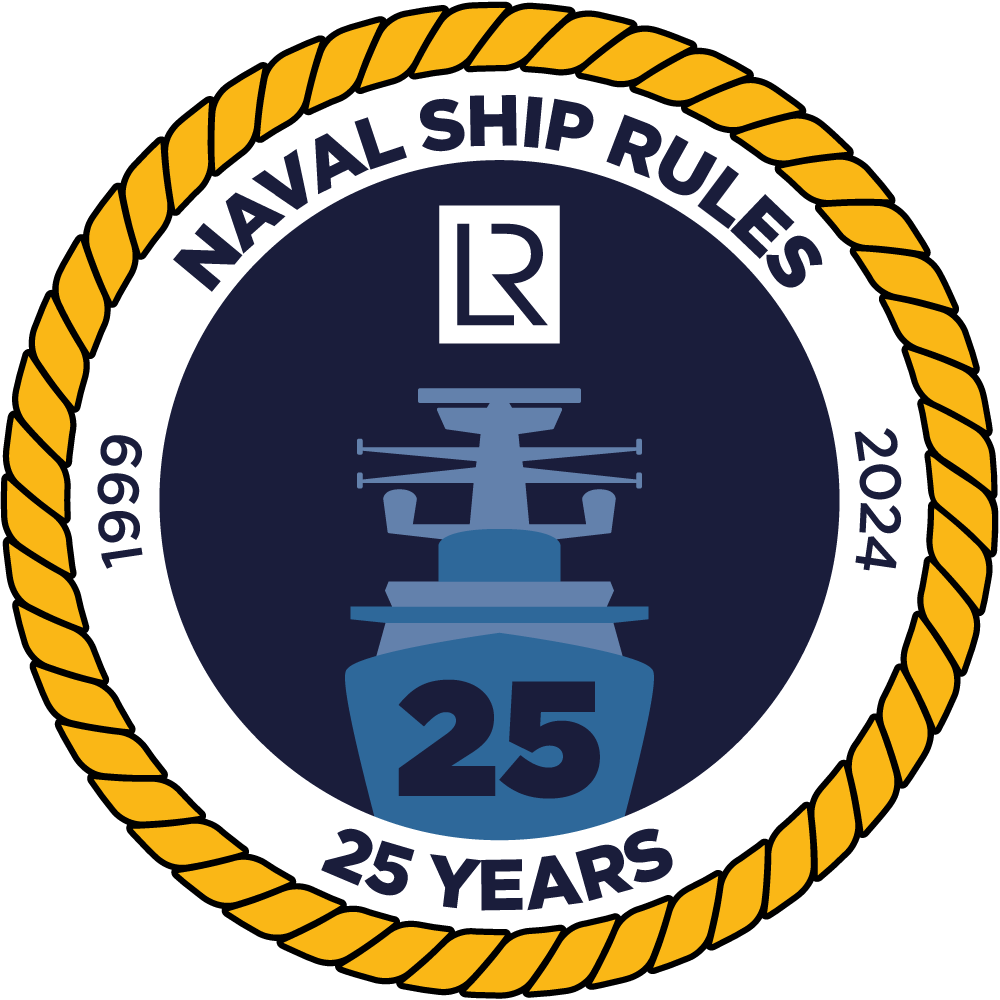LR Rules and Regulations for the Classification of Naval Ships 1 January 2025 can be accessed via Regs4ships; these have been updated by approved rule changes.
| Date published: |
01/01/25 |
| Last updated: |
01/07/25 |
| Tags: |
Rules and Regulations for the Classification of Naval Ships |
Recent updates
Notice No.5 (2024) & Notice No.1 (2025) Rules and Regulations for the Classification of Naval Ships, January 2025
Contents
The Rules and Regulations for the Classification of Naval Ships apply to naval ships designed and constructed for carrying and operating naval systems. For the purposes of Classification, naval ships can be grouped into five categories as follows:
NS1 Ships
This category covers ships used to deploy aircraft or equipment and ships that may be used as centres of command. Designed for worldwide operation and usually supported by ships from the NS2 category.
Typically it will cover ships above 140 m in length with a deep displacement of 10000 tonnes or more. It will include aircraft carriers, helicopter and amphibious support ships, and assault ships.
NS2 Ships
This category covers ships used to defend NS1 ships as part of a task force or act as independent units. They may have a variety of sole or multiple roles, including air defence, anti-submarine, sea defence, and shore support and will be designed for worldwide operation.
Typically it will cover ships of the length of 70 m to 140 m with displacements of 1300 tonnes to 20000 tonnes. NS2 ships may be described as cruisers, frigates, destroyers, corvettes or similar.
NS3 Ships
This category covers ships that have a front-line role but are not covered by the above descriptions. This category includes a variety of ships typically below 1500 tonnes displacement. They may operate independently or as part of a task force and are usually designed and constructed for specific roles such as minesweeping, beach landings, coastal defence or fast patrol duties.
NS(SR) Ships
This category covers auxiliary naval ships used for the support of civil and naval operations. They may have a variety of roles, including the movement of military and other personnel, ammunition, vehicles, stores and fuels and the transfer of such to other naval ships. They do not have a defined military role but may have a limited self-defence capability.
NS(SSC) Ships
This category is limited to ships below 1500 tonnes displacement or 110 m length. They do not have a defined military role but may have a limited self-defence capability and are usually designed and constructed for constabulary purposes such as coastal defence or patrol duties.
There are special requirements for hovercraft, mine-sweepers, and landing ships, which are to be designed in accordance with the appropriate Sections of relevant LR's Rules and Regulations.







